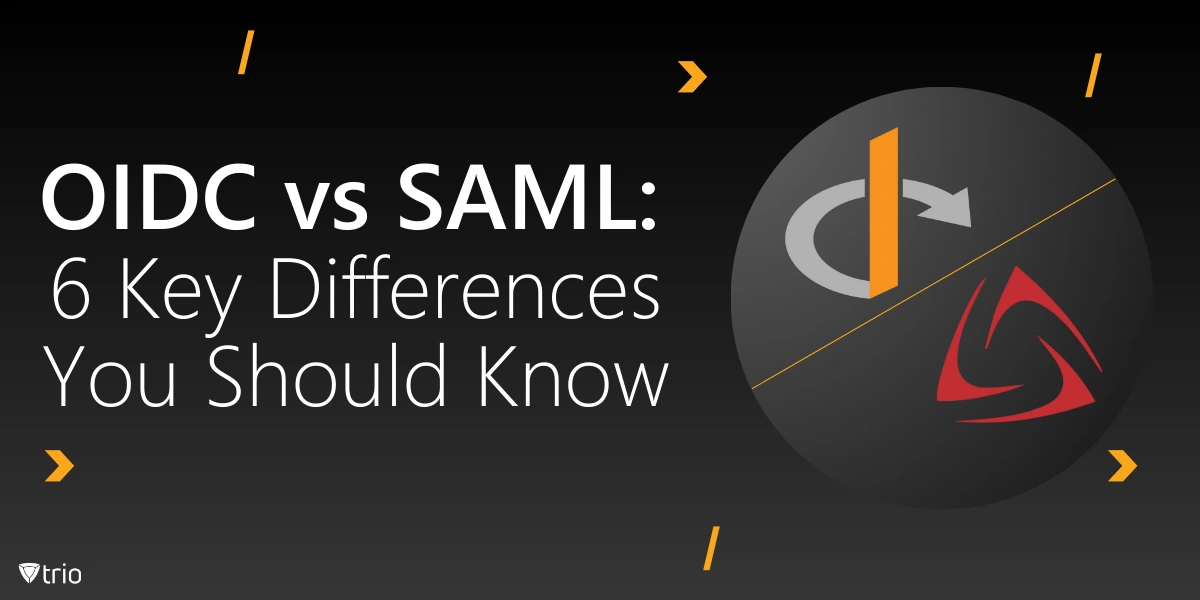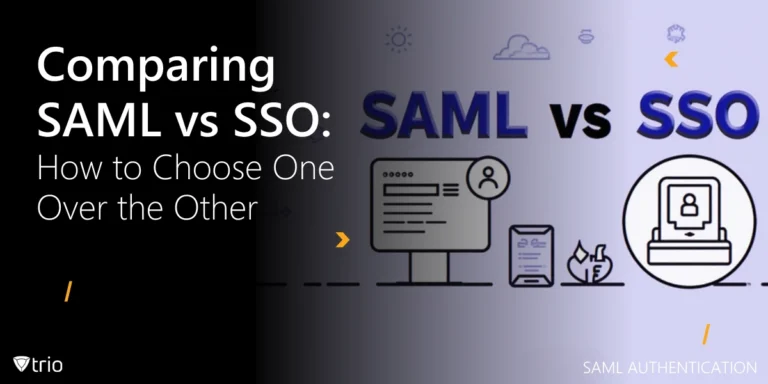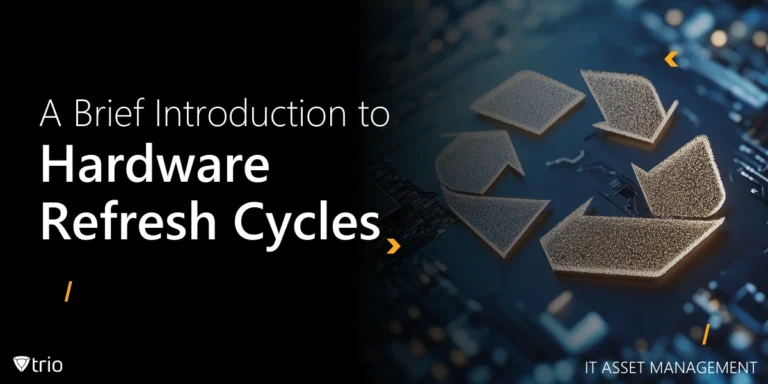Cyber threats are on the rise and users expect seamless access, so the demand for secure and user-friendly authentication protocols has never been higher. Today, organizations need strong solutions that protect data without complicating the user experience.
That’s where OIDC and SAML step in. These leading standards offer different paths to secure access. Understanding the distinctions in OIDC vs SAML helps you select the right protocol for your infrastructure.
In this post, we’ll compare OIDC and SAML through six key differences that impact IT-related decisions. By exploring these points, you’ll be better equipped to choose a protocol that fits your organization’s security and usability requirements.
Quick Overview: What are OIDC and SAML?
Before diving into the nitty-gritty of OIDC vs. SAML, let’s quickly set the stage for what each protocol does, so you know the differences and risks of choosing one over the other.
OIDC (OpenID Connect): Simple, Secure, and Modern
OpenID Connect, or OIDC, is a modern authentication protocol that sits on top of OAuth 2.0, built to streamline secure federated authentication. Think of OIDC as the go-to option for web and mobile applications needing a user-friendly way to confirm identity. It allows users to log in with a single account across platforms seamlessly, simplifying management for both users and organizations.
In practice, OIDC is designed to work smoothly with today’s web and mobile platforms, making it a versatile choice for most current applications. Since OIDC is lightweight and built with flexibility in mind, it adapts well to environments where applications frequently integrate with third-party services and provides both convenience and secure authentication.
SAML (Security Assertion Markup Language): Enterprise-Ready and Reliable
SAML, short for Security Assertion Markup Language, takes a different approach. It’s an XML-based protocol ideal for handling Single Sign-On (SSO) needs within large organizations where employees may need to access multiple enterprise applications. SAML excels at making sure users sign in once and access various systems without needing to log in repeatedly.
SAML is particularly valuable for companies with older, legacy systems because of its compatibility with traditional IT infrastructure. However, it’s important to note the difference between SSO and SAML itself: while SAML provides a protocol for SSO, not all single sign-on setups require SAML. Its adaptability in enterprise contexts is why SAML remains widely used, especially among organizations with complex, established systems.

6 Key Differences Between OIDC and SAML
Now, let’s dig into the essential ways OIDC and SAML stand apart. Knowing these distinctions will make choosing the right protocol much easier.
1- Purpose and Use Case
OIDC shines as an authentication layer that builds on OAuth 2.0. It is, therefore, an ideal choice for modern applications requiring quick, secure access without needing extensive backend systems. It’s especially effective for applications that prioritize user-friendly logins across web and mobile platforms.
SAML, on the other hand, was designed with a heavier focus on enterprise needs. It’s a great choice for single sign-on (SSO) in corporate environments, particularly when working with legacy systems that require stability over flexibility. If your organization needs a single sign-on solution across multiple established applications, SAML is a better fit.
2- Structure and Protocol Format
OIDC uses a JSON-based structure, which makes it compatible with web applications and APIs that need lightweight, readable data formats. This setup is a natural fit for developers working within modern frameworks and makes the protocol quick to integrate with most apps today.
SAML’s XML-based structure might seem cumbersome in comparison, but it has value in systems built before JSON became popular. XML’s formatting is still required for many enterprise systems, which benefit from SAML’s structured and reliable data transmission.
3- Security Mechanisms
OIDC relies on OAuth 2.0’s bearer token encryption, which allows users to authenticate without repeatedly logging in. However, while bearer tokens make authentication convenient, they do carry potential vulnerabilities, particularly when tokens are exposed to unauthorized users.
SAML cybersecurity focuses on signed assertions and XML signatures, which makes SAML transactions incredibly secure. By using XML signatures, SAML ensures that all exchanges are verified. This approach makes it especially useful in highly regulated environments where cybersecurity is a primary concern.
4-User Experience and Flexibility
When comparing SAML vs. OIDC pros and cons, OIDC offers a flexible user experience that adapts to various devices and screen sizes. This flexibility is particularly relevant for apps that support mobile and desktop logins.
SAML, however, works better in environments where simplicity is the goal, even if flexibility takes a backseat. It’s a strong fit for organizations where users need straightforward, dependable access to enterprise applications without switching devices or interface types frequently.
5- Complexity and Implementation
OIDC is relatively simple to implement, especially for those familiar with web-friendly formats and API-based integrations. Developers looking for a straightforward setup will appreciate OIDC’s compatibility with modern app ecosystems, which often reduces setup time.
SAML configuration can require more initial setup due to its XML basis, which brings a steeper learning curve. IT teams in larger organizations often require specialized knowledge to configure SAML correctly. However, once it’s in place, SAML provides a reliable SSO experience that requires minimal tweaking.
6- Ideal Environments
OIDC excels in modern app ecosystems where mobile and web integration is needed. It’s a great choice for businesses focused on apps and user-friendly online experiences, thanks to its flexible structure and ease of integration with third-party services.
SAML is a strong choice for secure, enterprise-focused environments with traditional applications. Organizations managing several secure applications and legacy systems benefit from SAML’s reliability in high-stakes, structured environments. Its XML-based format complements the consistent security and compatibility needs of these established systems.

OIDC vs SAML: Which Is More Secure?
In comparing OIDC vs. SAML vs. social identity providers, the security of each depends on your organization’s specific needs. For applications dealing with frequent logins from varied devices, OIDC offers strong endpoint security by leveraging OAuth 2.0 tokens to limit access effectively, making it a solid choice for flexible environments like mobile or web apps.
SAML, meanwhile, brings unmatched security in enterprise scenarios that require rigorous access control. Its reliance on signed assertions offers IT admins greater assurance in tightly regulated settings where endpoint security is critical. Choosing the right protocol means aligning with your organization’s workflow, user needs, and security demands.
Also, bear in mind that according to Auth0, although SAML is currently widely used for government citizen IDs and enterprise authentication, modern systems are increasingly requiring OIDC in its place.
Trio: Improve Your Security
Integrating MDM into your authentication setup enhances security across all devices in your organization. Our solution, Trio, bridges MDM with protocols like OIDC and SAML, providing seamless and secure user access. This integration ensures that whether you choose OIDC or SAML, your devices remain managed and compliant.
Trio simplifies endpoint security by enforcing policies that complement your chosen authentication method. To see how Trio can strengthen your security infrastructure, we encourage you to try the free demo. Experience firsthand how it can make managing devices and authentication more efficient.
Conclusion: Futureproofing With the Right Choice
Understanding the key differences between OIDC and SAML equips you to choose the authentication protocol that aligns with your organization’s needs. Whether it’s OIDC’s modern adaptability or SAML’s enterprise-grade stability, this knowledge helps enhance both security and user experience in your systems.
As an IT admin, evaluating your specific security requirements and how users interact with your platforms is important. By selecting the protocol that fits these parameters, you can future-proof your infrastructure and keep it secure and efficient as technology continues to evolve.
Get Ahead of the Curve
Every organization today needs a solution to automate time-consuming tasks and strengthen security.
Without the right tools, manual processes drain resources and leave gaps in protection. Trio MDM is designed to solve this problem, automating key tasks, boosting security, and ensuring compliance with ease.
Don't let inefficiencies hold you back. Learn how Trio MDM can revolutionize your IT operations or request a free trial today!




